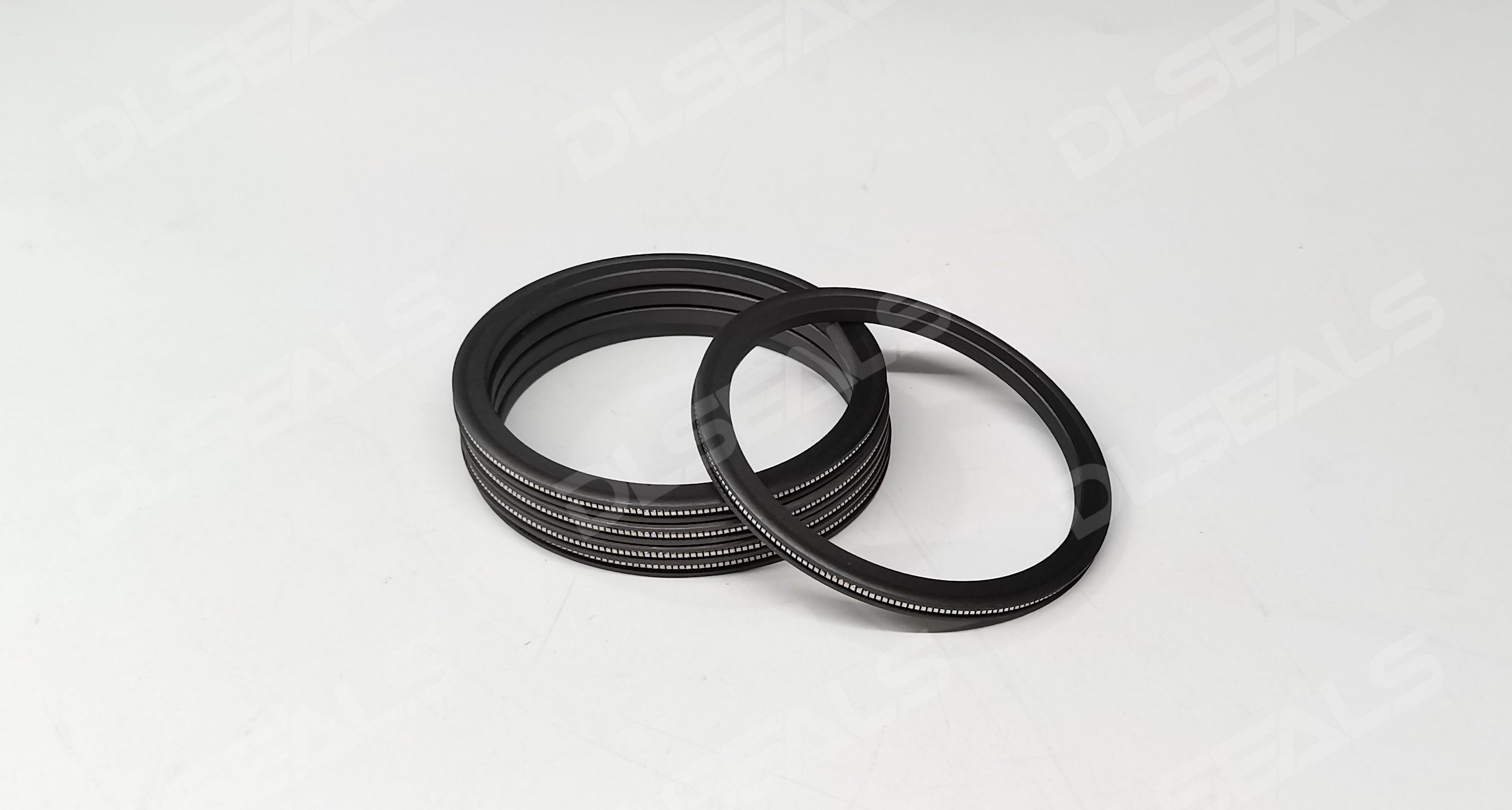In high-temperature and high-pressure valves, aviation fuel systems, and ultra-clean semiconductor equipment, the Spring-Energized Seal has become a benchmark solution in the field of dynamic sealing due to the synergy between the spring and the sealing lip. The choice of its core spring type (V-type and O-type) directly affects the sealing performance and life. This article deeply analyzes the technical differences and engineering selection logic of the two springs from the dimensions of structural mechanics, working condition adaptation, and failure mode.
1. Comparison of structural design and mechanical properties
Characteristics V-type spring O-type spring (helical spring)
Cross-sectional shape V-shaped metal strip continuous winding Round wire spiral winding
Force mode Radial elastic support is the main Axial compression + radial expansion composite effect
Stiffness coefficient (N/mm) High (500~2000) Medium-low (200~800)
Deformation compensation ability Limited (depends on V-shaped angle change) High (helical structure can deform in multiple directions)
Manufacturing process Stamping + winding, high precision requirements CNC winding, mature process
Core differences:
V-type spring: Provides radial support force through elastic bending of V-shaped section, high stiffness but small deformation range;
O-type spring: Uses compression and torsional deformation of the spiral structure to achieve multi-directional adaptive compensation.
2. Performance parameters and working conditions adaptability
1. Sealing pressure adaptability
V-type spring:
Advantages: High stiffness design can bear ultra-high pressure (static seal can reach 1000MPa);
Scenario: Nuclear power main pump seal, supercritical CO₂ turbine valve.
O-type spring:
Advantages: Large elastic deformation (compression rate can reach 50%), suitable for pressure fluctuation scenarios;
Scenario: Hydraulic cylinder reciprocating seal, aerospace actuator.
2. Temperature and medium compatibility
V-type spring:
Material: Inconel X-750 or Elgiloy (cobalt-based alloy) is mostly used, with a temperature resistance of 650℃;
Shortcomings: Complex cross-section makes plating difficult, and corrosion resistance depends on the substrate.
O-type spring:
Material: Commonly used 316L stainless steel or Hastelloy C-276, with better corrosion resistance;
Shortcomings: Stress relaxation is prone to occur at high temperatures (>400℃).
3. Dynamic response characteristics
V-type spring:
High-frequency vibration suppression: high stiffness reduces the risk of resonance, suitable for scenarios above 200Hz;
Friction power consumption: V-shaped edges may aggravate the wear of the sealing lip (surface silver plating is required).
O-type spring:
Displacement compensation: the spiral structure can absorb ±2mm axial deflection;
Starting torque: low elastic hysteresis, suitable for precision motion control.
4. Life and reliability
V-type spring:
Fatigue life: 10⁷ cycles (R=0.1, load>50% limit value);
Failure mode: stress concentration at the root of the V-shape leads to fracture.
O-type spring:
Fatigue life: 10⁸ cycles (R=0.5, load<30% limit value);
Failure mode: spiral gap jamming or corrosion pitting.
3. Comparison of typical application scenarios
Industry V-type spring pan-plug seal typical application O-type spring pan-plug seal typical application
Energy Ultra-high pressure natural gas wellhead valve (105MPa) Hydropower turbine guide vane seal (25MPa)
Aerospace Rocket engine liquid oxygen valve (-196℃) Aircraft landing gear hydraulic actuator (150℃)
Semiconductor Plasma etching machine vacuum chamber Wafer cleaning equipment rotary joint
Medical Autoclave seal (140℃ steam) Surgical robot joint seal (low friction)
4. Selection decision tree and cost analysis
Selection logic:
Preferential selection of V-type spring:
Pressure>70MPa;
Contact stress distribution needs to be precisely controlled;
High-frequency vibration environment (>150Hz).
Preferential selection of O-type spring:
Pressure fluctuation is more than ±30%;
Multi-directional compound motion (rotation + reciprocating);
Strongly corrosive media (such as hydrofluoric acid).
Cost comparison:
V-type spring:
Material cost: Inconel material is about ¥8000/kg;
Processing cost: Precision stamping + heat treatment accounts for 40% of the single product price.
O-type spring:
Material cost: 316L stainless steel is about ¥150/kg;
Processing cost: CNC winding accounts for 25% of the single product price.
Maintenance economy:
V-type spring pan-plug seal: high life cycle cost (replacement requires overall disassembly), but low failure rate;
O-type spring pan-plug seal: supports online spring replacement, maintenance cost is 30% lower.
V. Technology evolution and innovation direction
V-type spring optimization:
Topology optimization design: reshape the V-shaped section through finite element analysis, and reduce stress concentration by 50%;
Additive manufacturing: laser selective melting (SLM) forms an integrated spring-seal lip structure.
O-type spring upgrade:
Smart materials: Shape memory alloy (SMA) springs achieve temperature-adaptive preload;
Composite coating: Diamond-like carbon (DLC) coating reduces the friction coefficient to 0.02.
Hybrid spring:
V-O composite structure: The outer V-type spring provides rigid support, and the inner O-type spring compensates for microscopic deformation;
Application scenario: First wall sealing of nuclear fusion device (taking into account radiation resistance and thermal cycle).
Conclusion
The application of V-type and O-type springs in pan-plug seals is essentially a technical route choice of “rigid support” and “elastic adaptation”. V-type springs are known for their mechanical precision and dominate the extreme fields of ultra-high pressure and high-frequency vibration; O-type springs are the first choice for complex motion seals with their multi-directional compensation capabilities. In the future, with the development of material computing and digital twin technology, spring design will break through traditional forms and promote the evolution of pan-plug seals to “perception-response” integrated intelligent seals.
Post time: Mar-06-2025

